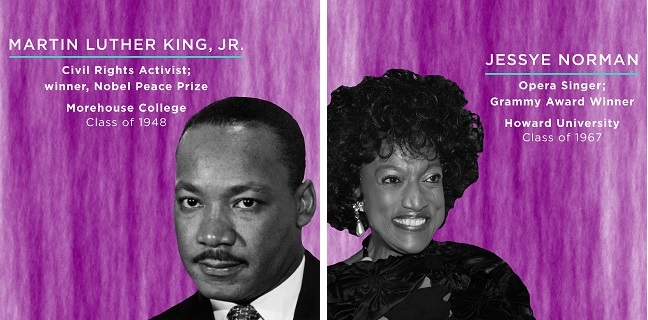Students planning to study in the United States should not overlook historically black colleges and universities. Today’s HBCUs welcome students of all races and national origins, and some no longer have an African-American majority.
A growing number of international students are attracted by these institutions’ commitment to social justice and often view themselves as part of a robust historical legacy.
Most HBCUs are found in the former slave-owning states of the U.S. Southeast. A few predate the U.S. Civil War, but most were established later, to improve black citizens’ access to education.
Institutions like Lincoln University, Howard University, Morehouse College and Spelman College, among others, emerged as centers of black intellectual life in the United States. They trained generations of African-American doctors, lawyers, engineers, artists, clergy and other professionals.

(© AP Images)
HBCU students were active in sit-ins, marches and demonstrations to protest race-based inequality, helping to spark the U.S. civil rights movement.
In recent years, many HBCUs have expanded their student diversity, enrolling students from different racial and ethnic backgrounds, and some now recruit international students. Programs at Atlanta’s Spelman College and at Howard University in Washington are among those targeting international students.
And a joint U.S.-Brazil program has been sending Brazilian students to several historically black colleges and universities since 2013.
Many HBCUs value international perspectives in the classroom. American students value the presence of their new classmates. A global education, they understand, prepares them for careers that may take them to countries and cultures very different from their own.
The most agile HBCUs work hard to create supportive environments for their international students. One example:
At Norfolk State University in Norfolk, Virginia, the nursing department developed a program to address the language, social and academic challenges of students from abroad. The result: improved student satisfaction and performance.

(© AP Images)
Other HBCUs are designing similar programs, in hopes of attracting ambitious students like Diego Buitrago-Gutierrez of Colombia.
Buitrago-Gutierrez earned a master’s degree in civil engineering at Howard University in 2015.
“I started reading about Howard University and I realized the importance of this university in the history of the U.S.,” he recalls. He decided to apply, and his graduate education prepared him for a bright future.
“I am going to start my own company in Latin America,” he says. “My idea is to offer solutions to protect the infrastructure against earthquakes,” especially in earthquake-prone countries like Colombia, Peru and Chile. “I want to apply the knowledge and experience that I have gotten at Howard and share this with the community.”
Get helpful information on how to study in the U.S. from EducationUSA and learn how other international students are thriving at U.S. colleges from ShareAmerica.







COMMENTS0
LEAVE A COMMENT
TOP